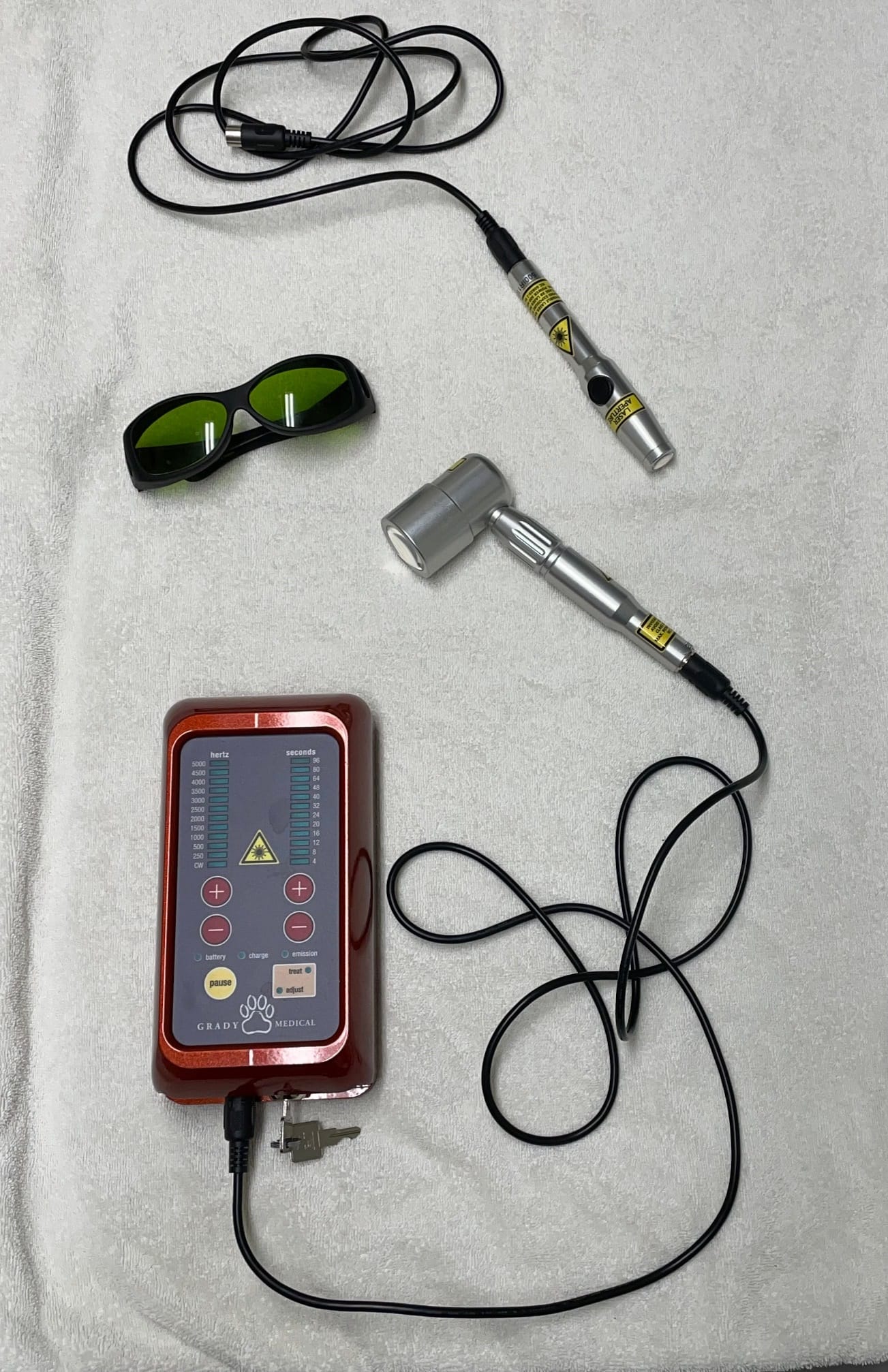Laser Therapy

During a treatment session, the handheld laser wand is slowly moved back and forth over the damaged tissue, producing a warm, pleasant sensation that most pets seem to enjoy and find relaxing.
The laser produces a focused beam of light that penetrates deep into the tissues, where it stimulates cellular activity and promotes the production of ATP, the energy source for cells. This increased cellular activity leads to accelerated healing, reduced inflammation, and improved circulation in the treated area. Laser therapy is a great tool for relieving chronic pain in pets that can’t or shouldn’t receive heavy painkillers. Pets can benefit from laser therapy in many ways including:
Pain Management: Laser therapy is effective in reducing pain associated with arthritis, joint injuries, and other musculoskeletal conditions.
Accelerated Healing: By promoting cellular regeneration and tissue repair, laser therapy can speed up the healing process for wounds, incisions, and soft tissue injuries.
Reduced Inflammation: Laser therapy helps to decrease inflammation in affected tissues, providing relief for pets with conditions such as inflammatory bowel disease or allergic skin reactions.
Enhanced Mobility: Pets suffering from mobility issues due to aging or injury can experience improved range of motion and flexibility with regular laser therapy treatments.
The effects of laser treatments are cumulative. To achieve optimal results, treatments should be completed as a series. We’ll work closely with you to develop a customized treatment plan that addresses your pet’s unique condition and goals.

